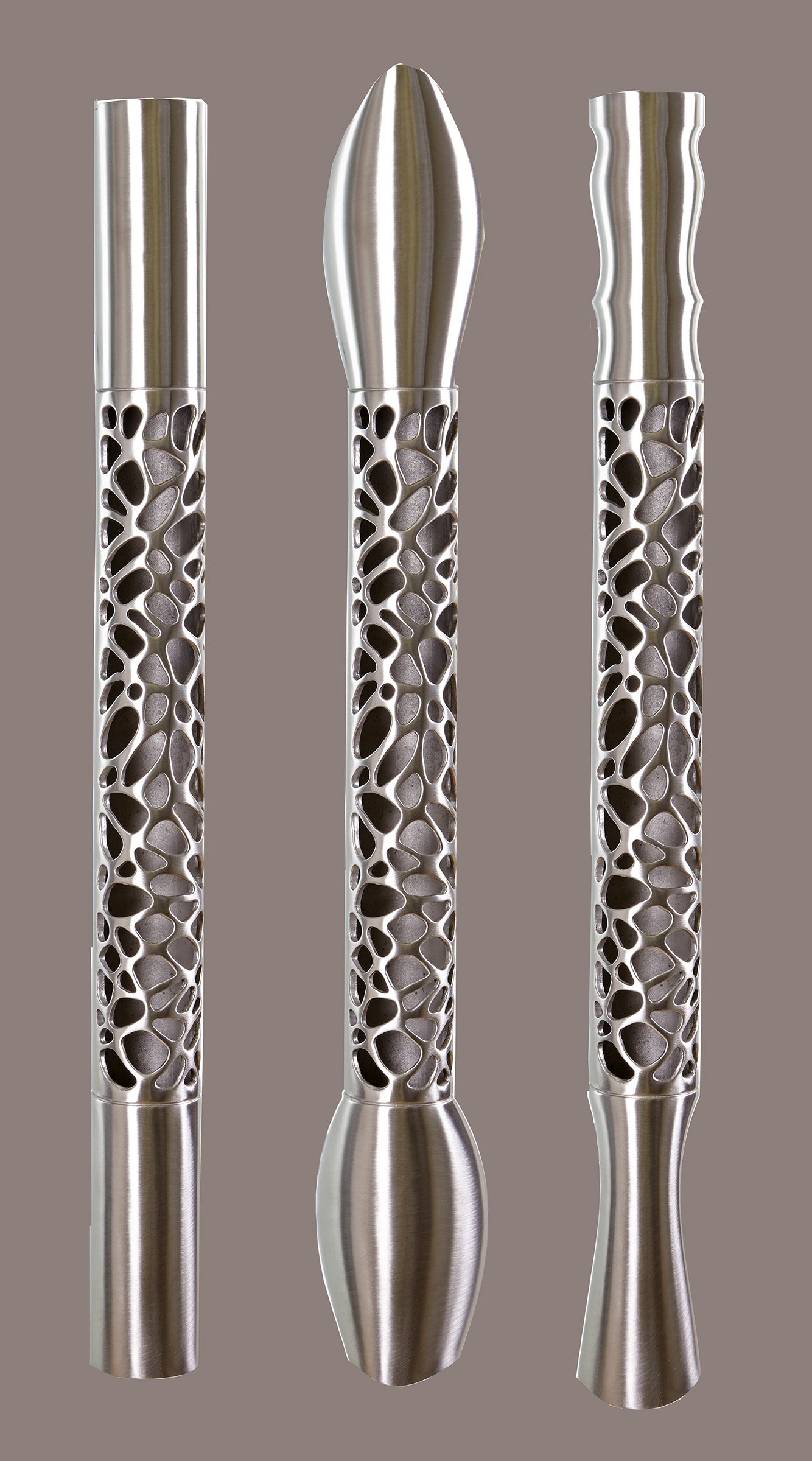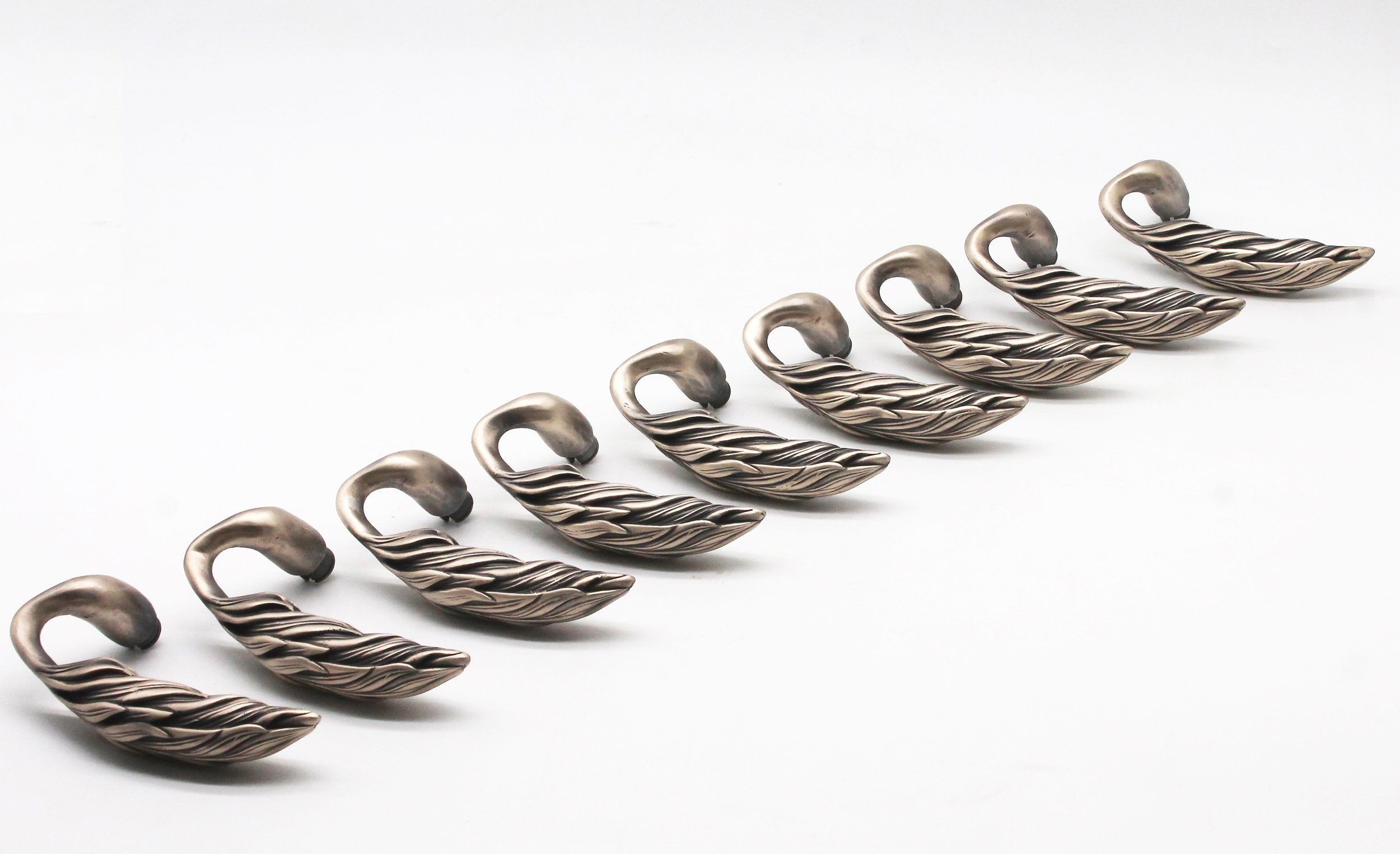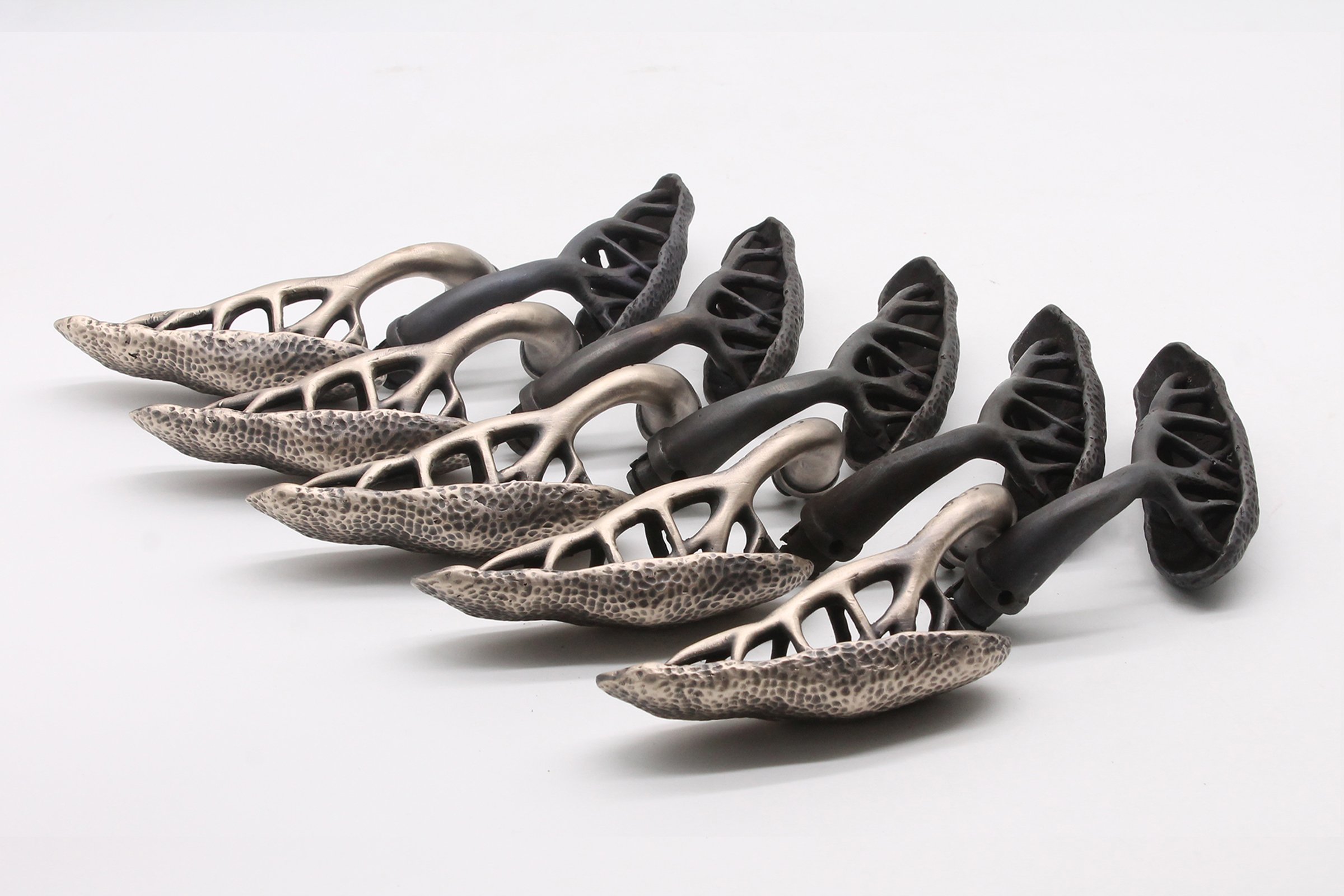Innovating Door Hardware
The Morphic collection of door pulls lends itself to a variety of home designs partly because we cast in 2 mediums, bronze and stainless steel and partly because the fluid organic design pairs well with contemporary or traditional door styles and door mediums. So, whether your door is wood, steel or glass, minimalist or classical, Morphic can be integrated into the design statement.
End details
Unlike many of our collections, the series has 4 possible tips and we are planning a fourth which I am loosely calling desconstrucionist.
The ends currently are standard heroic tip (left) and its larger relative (third from left), the symmetrical cylinder (second from left) and the scroll ends (right). Each end is designed to contrast with the cell-like center and is easily accentuated by finishing in a different sheen or by powder coating with a contrasting color.
Planned Customization during wax creation.
The organic cellular design can be playfully adapted by cutting, splicing, and distorting the wax cell segments to create a unique piece. This is a new direction that we are experimenting with and has the potential to create one-of-a-kind pieces. For those who work in Photoshop this is similar to using the polygonal lasso tool to select an area on a piece and manipulating the shape using the transform function to create a warped edge. Using Photoshop to design the new shape is relatively easy but replicating the piece first in wax and then in bronze or steel requires expertise in both casting and welding.
Brazing
In a subsequent post we will discuss mixing the alloys of steel and bronze to create a hybrid pull.

















